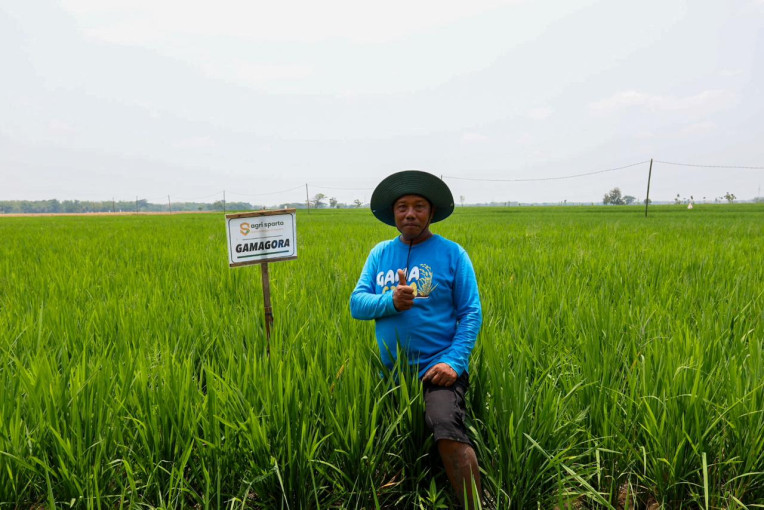
The Gamagora 7 rice variety, resulting from the UGM Agrotechnology Innovation Center’s research, is entering the market testing phase. This rice variety is being trialed in several paddy fields at nine locations in Pati, Wonogiri, Banyumas, Blora, Cepu, and Ngawi in East Java.
Professor Taryono, the Head of the UGM Agrotechnology Innovation Center, stated that Gamagora 7 stands for Gadjah Mada Gogo Rancah 7. The variety is also dubbed ‘amphibious’ rice due to its superior adaptive characteristics in response to climate change.
For the trial in Central Java, the planting of Gamagora 7 was done in collaboration with local governments. In East Java, it was carried out in partnership with an agribusiness company, Agri Sparta.
“Gamagora 7 is the third variety launched by UGM. It received the release permit from the Ministry of Agriculture on March 28, 2023,” said Professor Taryono during the visit to the market testing location for Gamagora 7 in Ngawi on Wednesday (November 1).
He explained that the research to obtain sturdy seeds for dry and wet fields began in 2006. The Gamagora 7 variety originates from the Rajalele rice in Klaten. Hence, it possesses the same quality, shape, and taste as Rajalele.
“The research’s goal from the beginning was to assemble rice that could be planted in rain-fed and paddy fields to cope with climate change and the impact of land use changes,” Professor Taryono said.
“For Gamagora 7, it has undergone multi-location trials in both paddy fields and rain-fed areas in several regions.”
He added that besides being suitable for planting in both fields, Gamagora 7 is resistant to brown planthopper biotype 2, leaf blight pathotype III, and blast diseases races 033, 073, and 133.
The plant’s life cycle is shorter than other varieties, i.e., 104 days from planting to harvest. Data from several regions that have completed harvesting indicated an average yield potential of 7.95 tons per hectare with a maximum potential of 9.8 tons of harvested dry rice.
As a type of rice suitable for the dry season and rain-fed areas, which doesn’t require excessive water and fertilizers during planting, Gamagora 7 gives hope to many farmers.
With its various advantages, Professor Taryono hopes that Gamagora 7 will contribute to realizing Indonesia’s food sovereignty.
Gemin Sini, a farmer from Guyung Village, Ngawi Regency, has high hopes for the Gamagora 7 rice variety. When showing the 55-day-old Gamagora 7 rice plants, he expressed confidence in a good harvest.
The Gamagora 7 seedlings were planted on his 1.5-hectare land. His 55-day-old Gamagora 7 rice plants showed denser tillers compared to IR 32 rice also grown in the same area.
“Gamagora 7 is good; it has many tillers and grows fast, quicker than the others. It’s different from IR; it has a lot of tillers, and within less than 25 days, it’s already full. Usually, at 25 days, you can still see the gaps,” Gemin Sini said.
Author: Agung Nugroho
Photographer: Donnie

